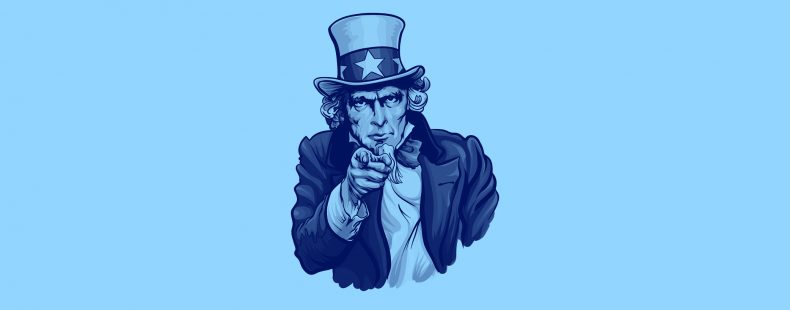There are many famous cartoon figures in American culture, but only one that’s regularly paired with the pointed statement that it wants you (yes, YOU) to do something: Uncle Sam.
What Uncle Sam wants you for varies. Historically he has most often wanted you to join the Army, though twists and variations abound. Uncle Sam himself, however, almost always has a white goatee and white locks covered by a top hat, and he’s typically wearing a blue blazer, red bowtie, and white shirt. Above all, depictions of Uncle Sam famously show him staring straight at whoever is looking at the poster in a direct call to action.
This depiction has been around for more than 100 years (prior to Uncle Sam, the goddess-like figure of Columbia personified first the colonies and then the US). But the legend of Uncle Sam dates back even further. The icon’s longevity and prevalence is part of the reason there’s an official Uncle Sam Day on September 13. But what about the real Uncle Sam? Was there one?
The real Uncle Sam?
There are several popular stories connecting the character of Uncle Sam to historical figures, though solid evidence for them is lacking. One thing, though, is certain: Uncle Sam is an extension of the common short form of the United States (of America), US.
According to legend, a meat packer from Troy, New York, named Samuel Wilson is the original Uncle Sam. (Sam, of course, is a pet short form of Samuel). He supplied barrels of beef to the US Army during the War of 1812, and each barrel had “U.S.” printed on it for United States. Another thing the initials came to stand for: Uncle Sam.
There are a couple theories on how the letters of the United States came to mean “Uncle Sam.” One is that people in Troy called Wilson Uncle Sam, and they assumed that’s what the lettering on the barrels stood for when they saw the beef being shipped to the Army. A Congressional resolution in 1961 declared this the official story, but it’s not the only one. The other theory is that soldiers who received the barrels played off of the lettering and called the contents of the barrel “Uncle Sam’s” food rations.
Whatever his exact origins, Uncle Sam became the personification of the United States and Troy became “The Home of Uncle Sam.” Though it wasn’t for another century that the cartoon we’re familiar with today was popularized.
Uncle Sam Wants YOU
Wilson, who died in 1854, didn’t live to see what mass media would turn his image into. Political cartoonist Thomas Nast is credited with drawing some of the most popular Uncle Sam cartoons in the 1870s. Nast is the same person responsible for the jolly bearded depiction of Santa Claus, and he helped popularize Uncle Sam’s white beard and patriotic attire.
In 1917, Uncle Sam became the character that you’d recognize today. New York illustrator James Montgomery Flagg took Uncle Sam and merged it with the concept behind a British military poster—the same country that the troops Samuel Wilson fed were fighting against. The British poster showed Secretary of State for War Lord Kitchener staring off the page and pointing at the viewer, just like Flagg’s final Uncle Sam poster. Basing a character on a historical figure can be complicated, however. Kitchener was an especially brutal commander, and he’s infamous for creating some of the first concentration camps during the Boer War in Africa.
Flagg’s Uncle Sam drawing was done for a newsweekly with the title “What Are You Doing for Preparedness?” The text was changed to “I Want YOU for U.S. Army” when turned into a recruitment poster. In 1917 and 1918, when the US was involved in World War I, about 4 million Uncle Sam posters were printed.
This version of Uncle Sam made another appearance in World War II, and continues to live on in popular culture.













